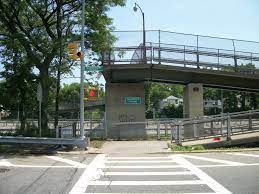Today even the New York Post--you know, the paper famous for its "Headless Body In Topless Bar" headline--claimed that Donald Trump has gone too far:
Just when I thought light and poetry and flowers were about to return to this land--OK, we're getting some of the flora--Faux, I mean, Fox News is becoming even more, in the Post's eloquence, deranged in its demonization of transgender people.
I mean, when you treat yourself to the kernels of wisdom Tucker Carlson and Greg Gutfield offer up at dinnertime, you might come away thinking that we are an "Invasion of the Body Snatchers"-type force taking over women's sports. Oh, if I were scooping up medals and trophies in the Tour de France Femme or the Virginia Slims tournament the way the folks at Fox would have you believe, I would--I dunno--be writing this post from a duplex near the Luxembourg Gardens and hiring artists to design this blog.
Anyway, if you look at the podium photo for the Randall's Island Criterium--a race held practically outside my window--you'll see that winner Tiffany Thomas doesn't look markedly bigger or more muscular than the other two female cyclists, who finished second and third, on either side of her. And, apparently, her hormone levels qualify her to compete in women's events according to all of the governing bodies.
In short, she has no "unfair" advantage, any more than I now have over any other woman within a decade of my age who is a regular cyclist or engages in any other kind of sport or physical regimen. I am not merely making a claim; I am reiterating what scientific and medical researchers have found and reported.
OK, now I'll reveal Tiffany Thomas' "secret sauce." She got it from me. You see, Randall's Island is practically outside my window: After pedaling over the Queens spur of the RFK Bridge, I ride through the Island on my way to the Bronx, Westchester County and Connecticut. So I twitched my nose and sent her those special rays--kinda like the ones from the Jewish Space Lasers—that only we, trans people, can send each other!




